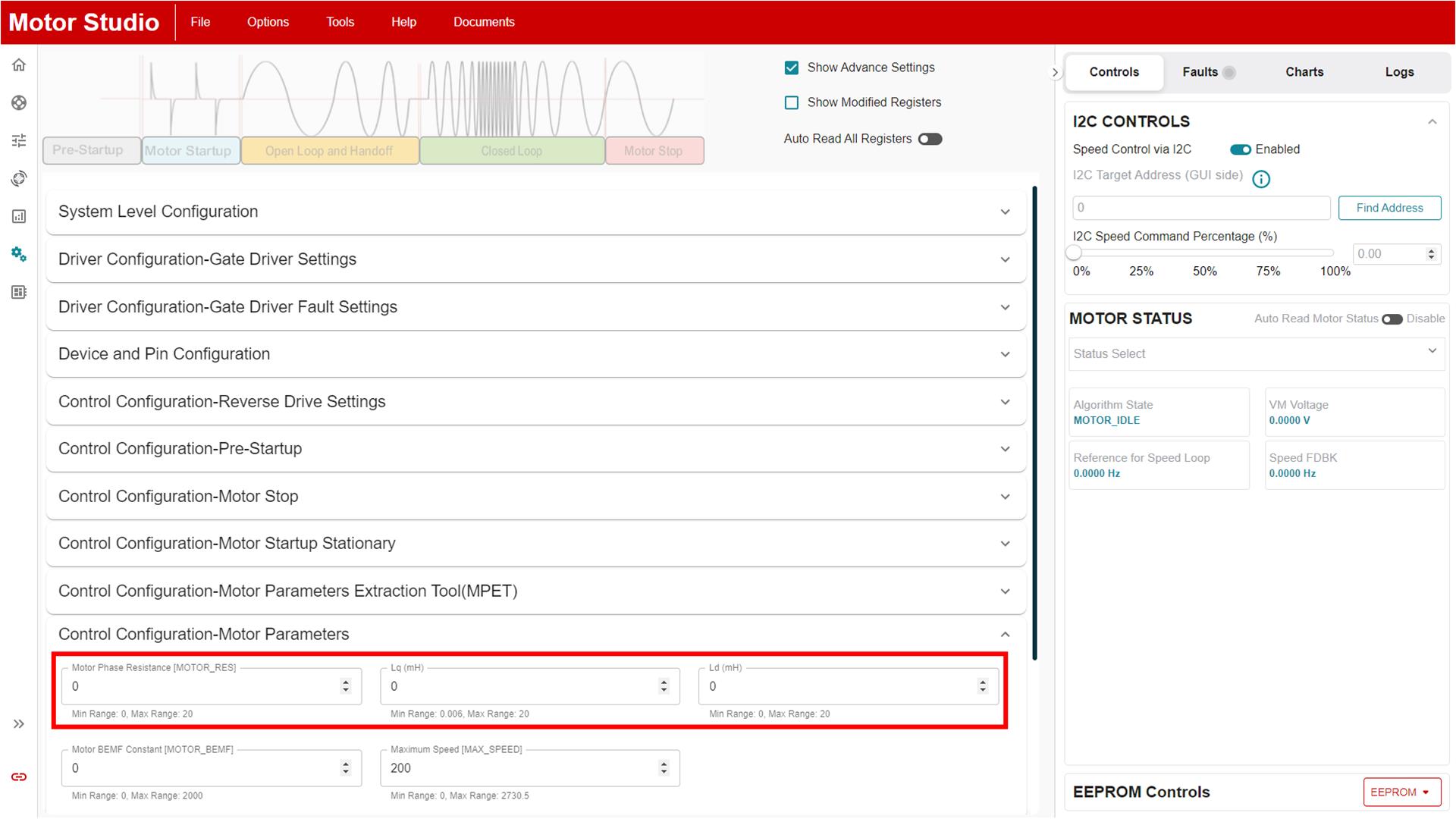SLLU374 November 2024 MCF8329A
4.1.5 Input the Motor's Phase Resistance and Inductance
Using the instructions in the motor parameters FAQ, find the motors phase resistance and inductance. Once these values are found, input the phase resistance into the Motor Phase Resistance box and the phase inductance into both the Lq and Ld boxes in the Motor Parameters tab on the Advanced Tuning page.
 Figure 4-8 Motor Resistance and
Inductance
Figure 4-8 Motor Resistance and
Inductance